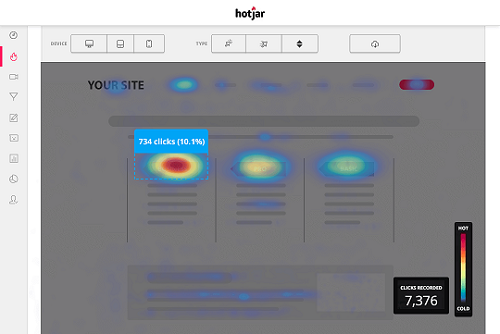Emoji Dick
Emojis to replace the written word?
The rhetoric of social media seems to be the new linguistic status quo, and with the news of 250 new emoji characters set to hit keypads around the world later this month, the cute characters are here to stay. Emoji fans can even look forward to an emoji-only social network site. In a mammoth undertaking, the entire epic of Moby Dick has been translated, word for word, into emoji speak. Literary enthusiasts can buy Fred Benenson’s ambitious 'Emoji Dick' project on Amazon now for a couple of hundred dollars (or a fiver for a PDF copy).Undeniably emojis are changing the way we communicate, and linguists and lexicographers are overwhelmed with the new language – how long is it before a set of smiley faces pops up in the Oxford Dictionary alongside the fabled ‘selfie’? Linguist Ben Zimmer says that ‘it’s the wild west of the emoji era. People are making up the rules as they go. It’s completely organic’.
Linguists from Stanford University are analysing emoticon use on Twitter – it seems that geography, age, gender and social class all affect emoticon use in just the same way that dialects and regional accents exist. Friendship groups will fall into habits of favouring certain emojis, similarly to how slang develops.
For example, there is a difference between the type of person who will use a hyphen ‘nose’ in a smiley face and those who opt for the more youthful and compact non-nose. Equally, it seems that women are far more emoji-minded, using emoticons to a much greater extent than men; presumably because women are, on the whole, more emotionally charged and so the cute, endearing emoji designs will appeal.
With Twitter’s 140-word limit per tweet and Instagram’s focus on the image, we are constantly being forced to truncate whole sentences into bite-size chunks of information, which is where the hashtag and emoticon faces originally came in handy.
But it’s not just on social media that this new form of communication exists, as the inclusion of hashtags, @ signs and Throw Back Thursdays are common in longer articles in print and in everyday speech.
Certainly, our current punctuation is limited – an exclamation mark can signal a variety of sentiments from anger, to disbelief to excitement. In person to person interactions, so much of the conversation and meaning is expressed through facial expressions, thus it follows that a little picture of a face may actually be a more representative form of communicating meaning than mere words. It makes it far easier to identify and judge the tone of what someone is trying to say.
In many ways the idea behind emojis is actually very old; pictorial expression was the basis of written communication, and it’s easy to see similarities between ancient hieroglyphics and cave paintings and the image-based emoticon system. Linguists, artists and philosophers have long imagined a universal pictorial language, a visual system of communication that captures a higher level of meaning than the written word. How many times have you replied to a message with an emoji? The answer is probably lots, as the images just seem to capture sentiment more succinctly and expressively than a sentence.
In 1969, Vladimir Nabokov told The New York Times: “I often think there should exist a special typographical sign for a smile … a supine round bracket.” In 1982, computer scientist Scott Fahlman granted his wish. Looking for a solution to the miscommunication that prevailed on early Internet message boards, he proposed that a rotated smiling face, composed of a colon, a hyphen and a parenthesis — :-) — should indicate that the writer was joking.
Are we condensing emotion into a miniature meaningless symbol or capturing a wealth of feeling which can be simply communicated and understood? It’s not that language is being ruined, but it certainly is being updated - the language of social media is undeniably more suited to documenting the temporary and ironic nature of how we live.
Recent graduate and now interning as content editor, when she's not
writing articles Katie can quite likely be found festival-ing,
holiday-ing or reading a book (dedicated English student that she is). Follow her @KatieAtSMF.
Contact us on Twitter, on Facebook,
or leave your comments below. To find out about social media training
or management why not take a look at our website for more info http://socialmediacambridge.co.uk/.
Emoji Dick
![]() Reviewed by Anonymous
on
Friday, July 11, 2014
Rating:
Reviewed by Anonymous
on
Friday, July 11, 2014
Rating:














 Entrepreneur, international speaker on Social Media Marketing. First one in the UK to write and speak in conferences about Twitter as a marketing tool. Consultant to Corporate Companies, Government Organizations, Marketing Managers and Business Owners.
Entrepreneur, international speaker on Social Media Marketing. First one in the UK to write and speak in conferences about Twitter as a marketing tool. Consultant to Corporate Companies, Government Organizations, Marketing Managers and Business Owners. Aspiring novelist with a passion for fantasy and crime thrillers. He hopes to one day drop that 'aspiring' prefix. He started as a writer and soon after he was made Executive Editor and Manager of the team at Social Songbird. A position he held for 5 years.
Aspiring novelist with a passion for fantasy and crime thrillers. He hopes to one day drop that 'aspiring' prefix. He started as a writer and soon after he was made Executive Editor and Manager of the team at Social Songbird. A position he held for 5 years. Musician, audio technician, professional tutor and a Cambridge university English student. Interested in writing, politics and obsessed with reading.
Musician, audio technician, professional tutor and a Cambridge university English student. Interested in writing, politics and obsessed with reading. Recently graduated with a BA in English Literature from the University of Exeter, and he is about to study an MA in Journalism at the University of Sheffield. He is an aspiring journalist and novelist; in his free time he enjoys playing chess, listening to music and taking long walks through nature.
Recently graduated with a BA in English Literature from the University of Exeter, and he is about to study an MA in Journalism at the University of Sheffield. He is an aspiring journalist and novelist; in his free time he enjoys playing chess, listening to music and taking long walks through nature. Lucy is an undergraduate BSc Politics and International Relations student at the London School of Economics and Political Science.
Lucy is an undergraduate BSc Politics and International Relations student at the London School of Economics and Political Science. Anna Coopey is a 4th year UG student in Classics at the University of St Andrews in Scotland. She is a keen writer and researcher on a number of topics, varying from Modern Greek literature to revolutionary theory.
Anna Coopey is a 4th year UG student in Classics at the University of St Andrews in Scotland. She is a keen writer and researcher on a number of topics, varying from Modern Greek literature to revolutionary theory.
